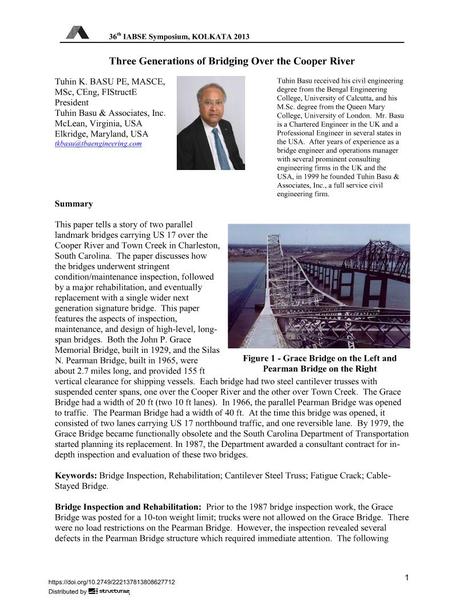|
Abstract:
|
This paper tells a story of two parallel landmark bridges carrying US 17 over the Cooper River and Town Creek in Charleston, South Carolina. The paper discusses how the bridges underwent stringent condition/maintenance inspection, followed by a major rehabilitation, and eventually replacement with a single wider next generation signature bridge. This paper features the aspects of inspection, maintenance, and design of high-level, long-span bridges. Both the John P. Grace Memorial Bridge, built in 1929, and the Silas N. Pearman Bridge, built in 1965, were about 2.7 miles long, and provided 155 ft vertical clearance for shipping vessels. Each bridge had two steel cantilever trusses with suspended center spans, one over the Cooper River and the other over Town Creek. The Grace Bridge had a width of 20 ft (two 10 ft lanes). In 1966, the parallel Pearman Bridge was opened to traffic. The Pearman Bridge had a width of 40 ft. At the time this bridge was opened, it consisted of two lanes carrying US 17 northbound traffic, and one reversible lane. By 1979, the Grace Bridge became functionally obsolete and the South Carolina Department of Transportation started planning its replacement. In 1987, the Department awarded a consultant contract for in-depth inspection and evaluation of these two bridges.
|

